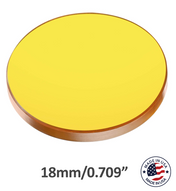Title: Beyond the Blueprint: Unveiling the Complexities of Compound Lenses
Greetings, fellow laser enthusiasts! Today, I'm pulling back the curtain on a little secret – a meticulously designed compound lens with a minuscule 10.6μm focal point and an impressive 2" focal length. But here's the catch – I've hesitated to bring it to life, questioning its true value. Let's embark on a journey through optics, alignment, and quality, as I peel away the layers of this intricate tale.
The Intricacies of Optical Mastery
Designing a compound lens that promises the smallest focal point is no small feat. However, even the most dazzling optics hinge on a crucial foundation – perfect beam alignment. Picture this: The laser beam must strike the center of the lens at a perfect 90-degree angle. A minor misalignment can spell disaster, rendering even the most complex lens ineffective.
The Alignment Equation: A Matter of Fact
Here's a fact that might surprise you: In the realm of optics, poor beam alignment paired with a compound lens can potentially yield a less desirable focal point than a simple single lens system. It's a reality check that highlights the significance of beam alignment, trumping the allure of complexity.
The Quality Quandary
Now, let's shift our focus to the unsung hero – optic quality. It's not just about materials; it's about the fine details – edge thickness variation, sphericity, and surface quality. In the quest for laser perfection, these nuances hold the key. And here's a tidbit to chew on: Errors in optics become magnified in compound systems, underlining the importance of impeccable quality.
Reality Check: Bridging the Gap
Now, here's the nitty-gritty – compound lens systems dazzle in theory, but real-world success hinges on two cornerstones: impeccable beam alignment and owning the crème de la crème of optics. Skipping these steps could lead to lackluster results, potentially falling short of what a simpler single lens system could achieve.
A Costly Pursuit: Dollars and Dots Per Inch
Let's talk numbers – the difference between 2000dpi and 800dpi. Yes, 2000dpi sounds tempting, but in the real world, perfection is an elusive dance. Compound lens systems thrive in ideal settings, where everything aligns seamlessly. But consider this: Is the investment worth it? And remember, 2000dpi's promise comes with a price tag and a spot size of 10.6μm, the very heartbeat of your laser.
In Conclusion: The Lens Odyssey
As we wrap up this lens journey, let's remember that optics are a harmonious symphony, where alignment and quality take center stage. Complexity is captivating, but it's no match for the synergy between a perfectly aligned beam and the finest optics.
Before you dive into the world of compound lenses, take a moment to master alignment and quality. Only then can you truly harness the potential of your laser, crafting results that resonate with precision and perfection.
Laser-focused regards,
Steve Owner, American Photonics






